Physical Address
304 North Cardinal St.
Dorchester Center, MA 02124
Exophytic
Papillomatosis
Compact eosinophilic hyperkeratosis
Coarse hypergranulosis in dells
Vertical tiers of round parakeratosis common above peaks
Blood and serum common above peaks
Koilocytes variable
The biopsy will demonstrate a compact stratum corneum, coarse hypergranulosis, and papillomatosis. The papillomatosis often curves inward. Vascular ectasia is common. Koilocytes (vacuolated cells with hyperchromatic shriveled nuclei) may be present. Red cytoplasmic inclusions may sometimes be present.
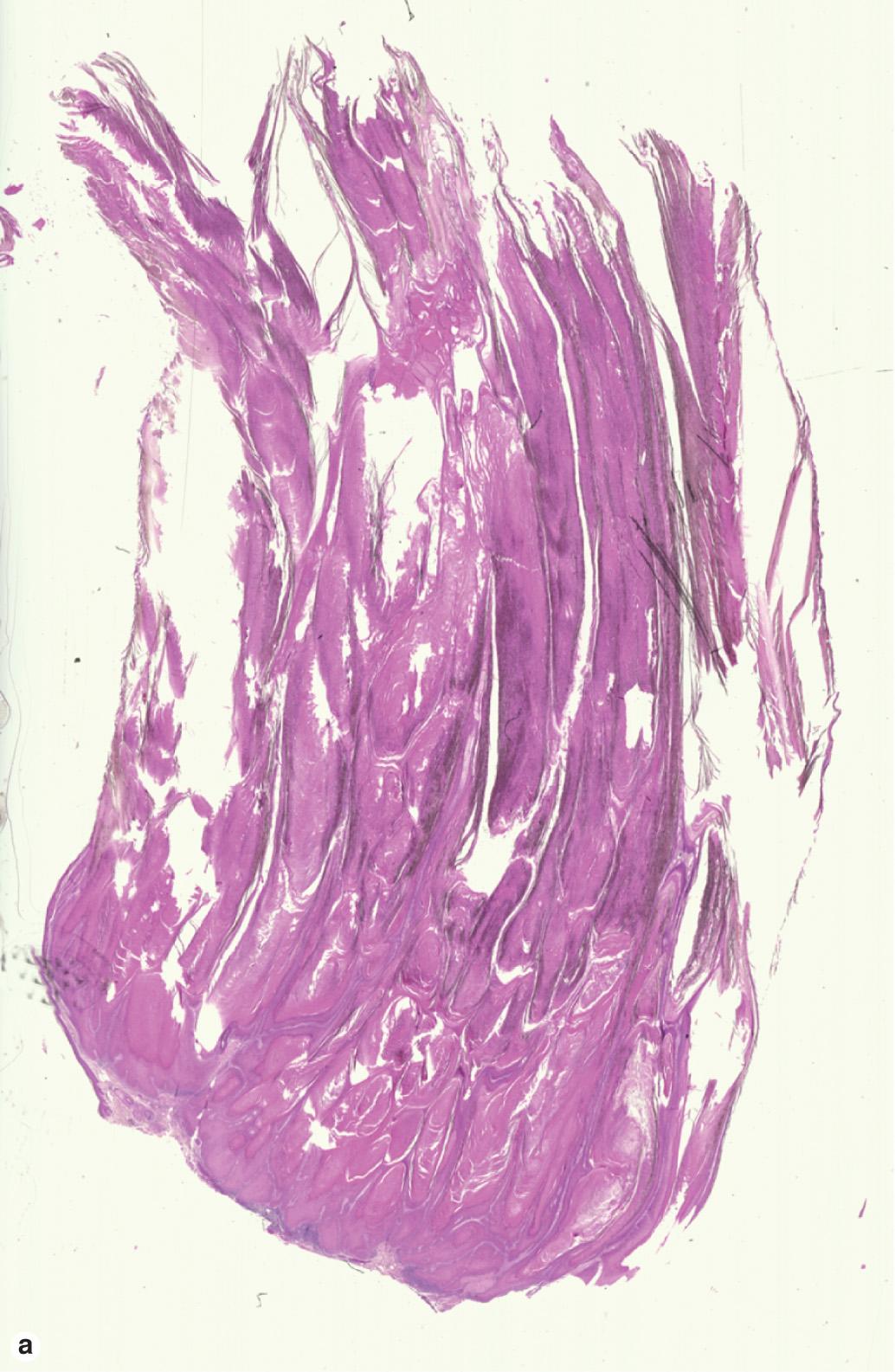
Deep palmoplantar wart with anthill-like appearance clinically
Endophytic
Coarse red cytoplasmic inclusions
Myrmecia are associated with human papillomavirus 1 (HPV-1).
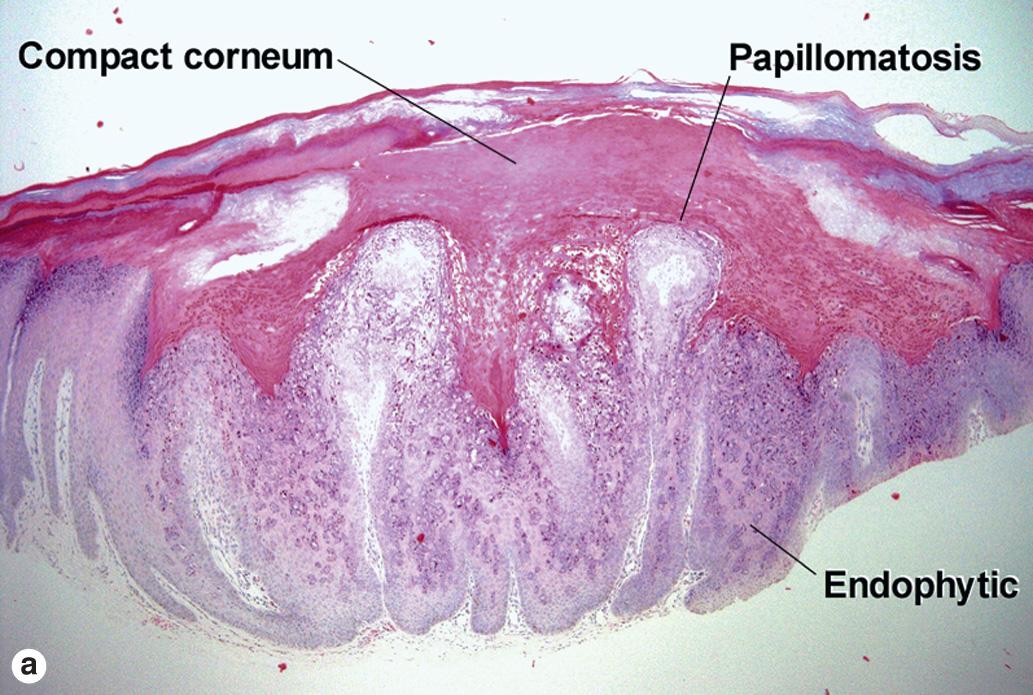
Coarse basket-weave hyperkeratosis
Hypergranulosis common
“Bird's eye” cells (like koilocytes but lack shriveled nuclei)
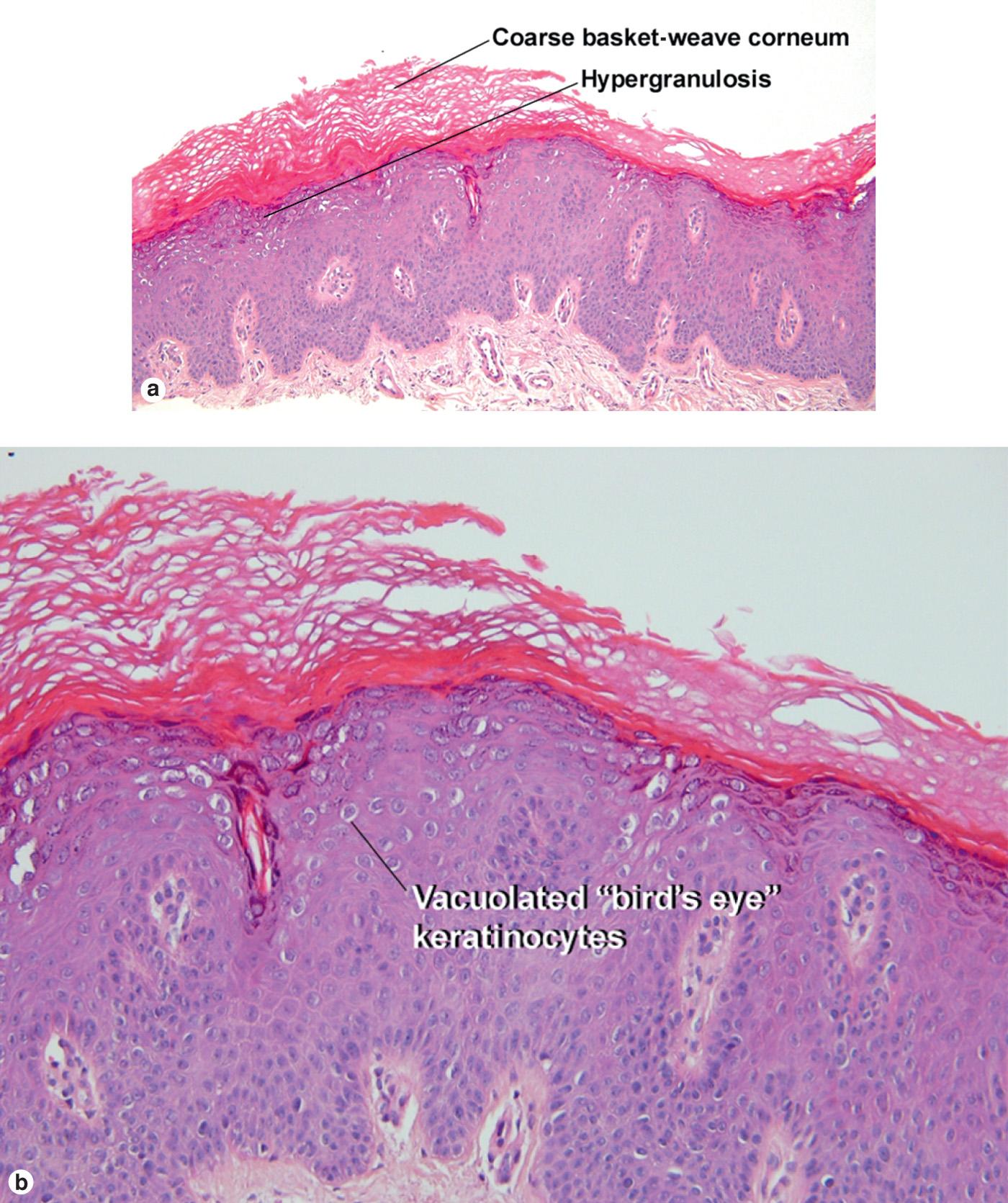
Widespread, flat warts with foamy blue cytoplasm
Benign acanthoma on genital skin
Areas of compact stratum corneum, round parakeratosis, and coarse hypergranulosis generally present
Vacuolated keratinocytes, typically with large gray nuclei
True koilocytes rare
Condylomata acuminata commonly have horn cysts and resemble seborrheic keratoses. The two are differentiated by areas of compact stratum corneum, round parakeratosis, coarse hypergranulosis, and vacuolated keratinocytes with large gray nuclei. In situ hybridization can identify the HPV type.
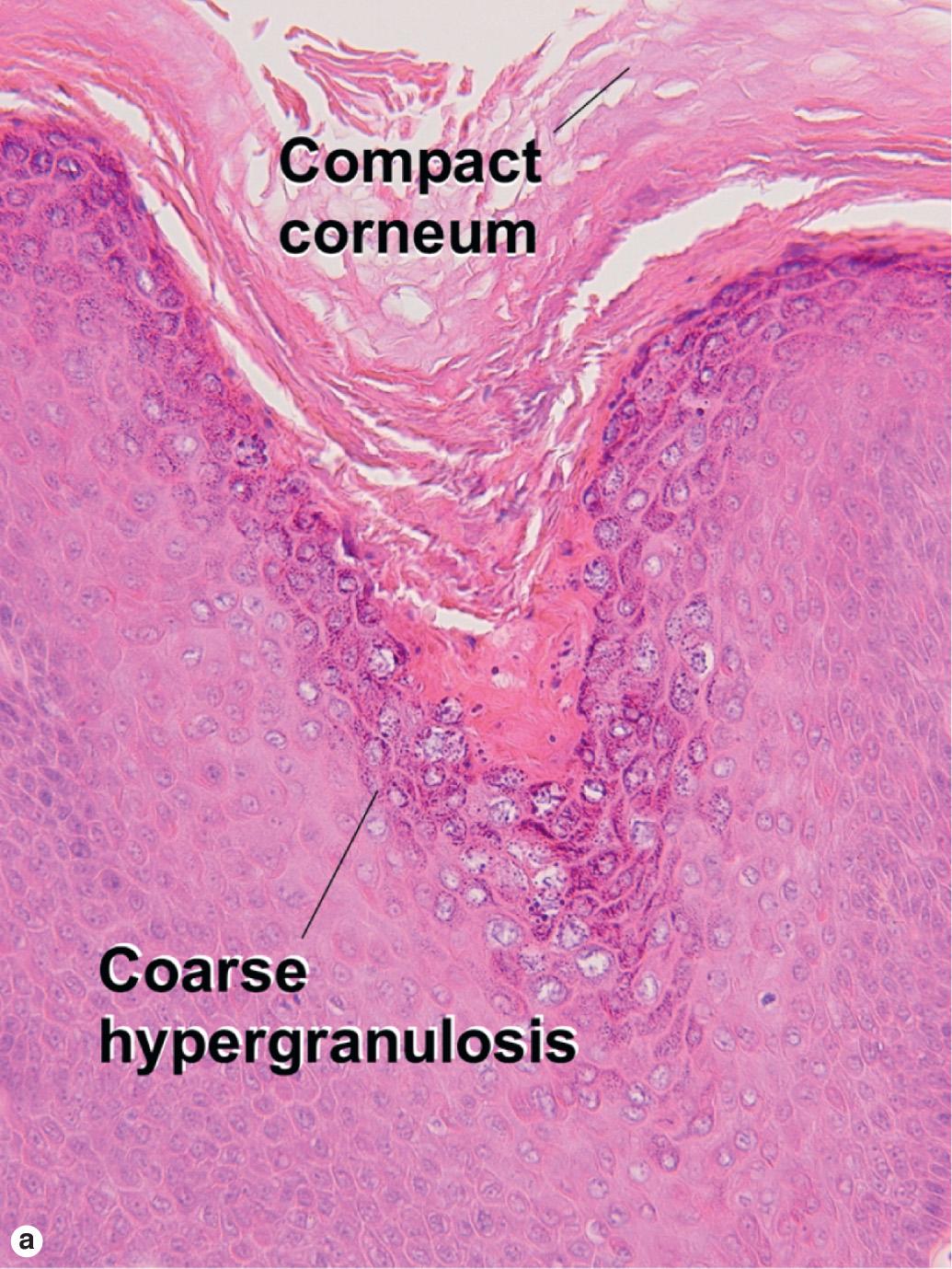
HPV-16 most commonly
Atypia
Bowenoid papulosis presents as discrete pink, brown, or gray lesions in the genitalia. They are typically sessile rather than papillomatous or cauliflower-like. The histologic spectrum ranges from that of a condyloma with buckshot scatter of atypical cells to full-thickness atypia, indistinguishable from Bowen disease.
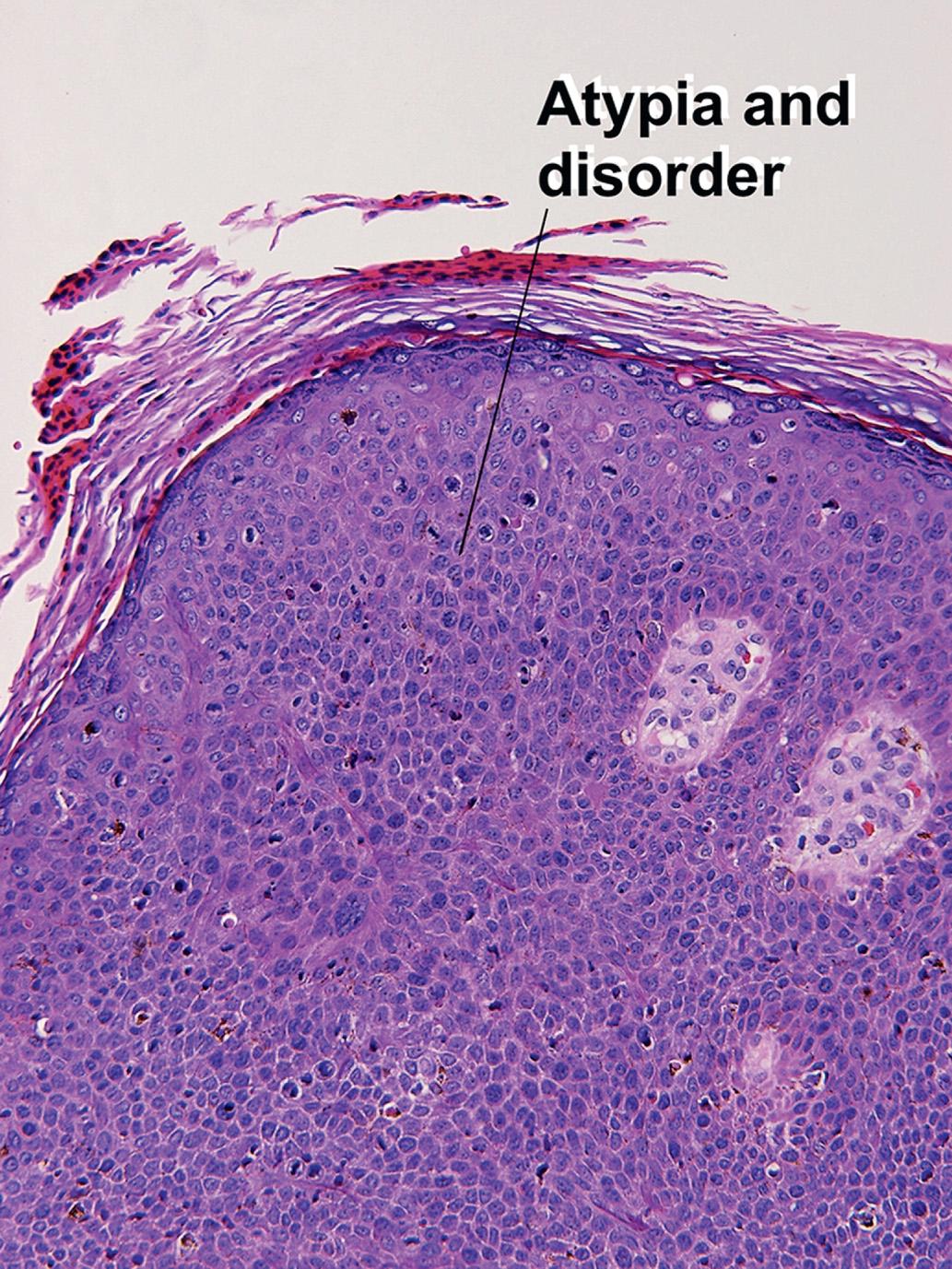
Focal oral hyperplasia
Hyperkeratosis with round parakeratosis
Epithelial pallor
HPV-13 and -32
| Type of wart | HPV type |
|---|---|
| Common | 1, 2, 4 |
| Flat (verruca plana) | 3, 5 |
| Plantar | 1 (myrmecia), 2, 4 (mosaic) |
| Epidermodysplasia verruciformis | 5, 8, and many others |
| Buschke–Löwenstein tumor | 6, 11 |
| Butcher's | 7 and others |
| Laryngeal papillomas | 6, 11 |
| Genital dysplasia | 16, 18, 31, 33, 35, and others |
| Heck focal oral hyperplasia | 13, 32 |
| Subungual squamous cell carcinoma | 16 |
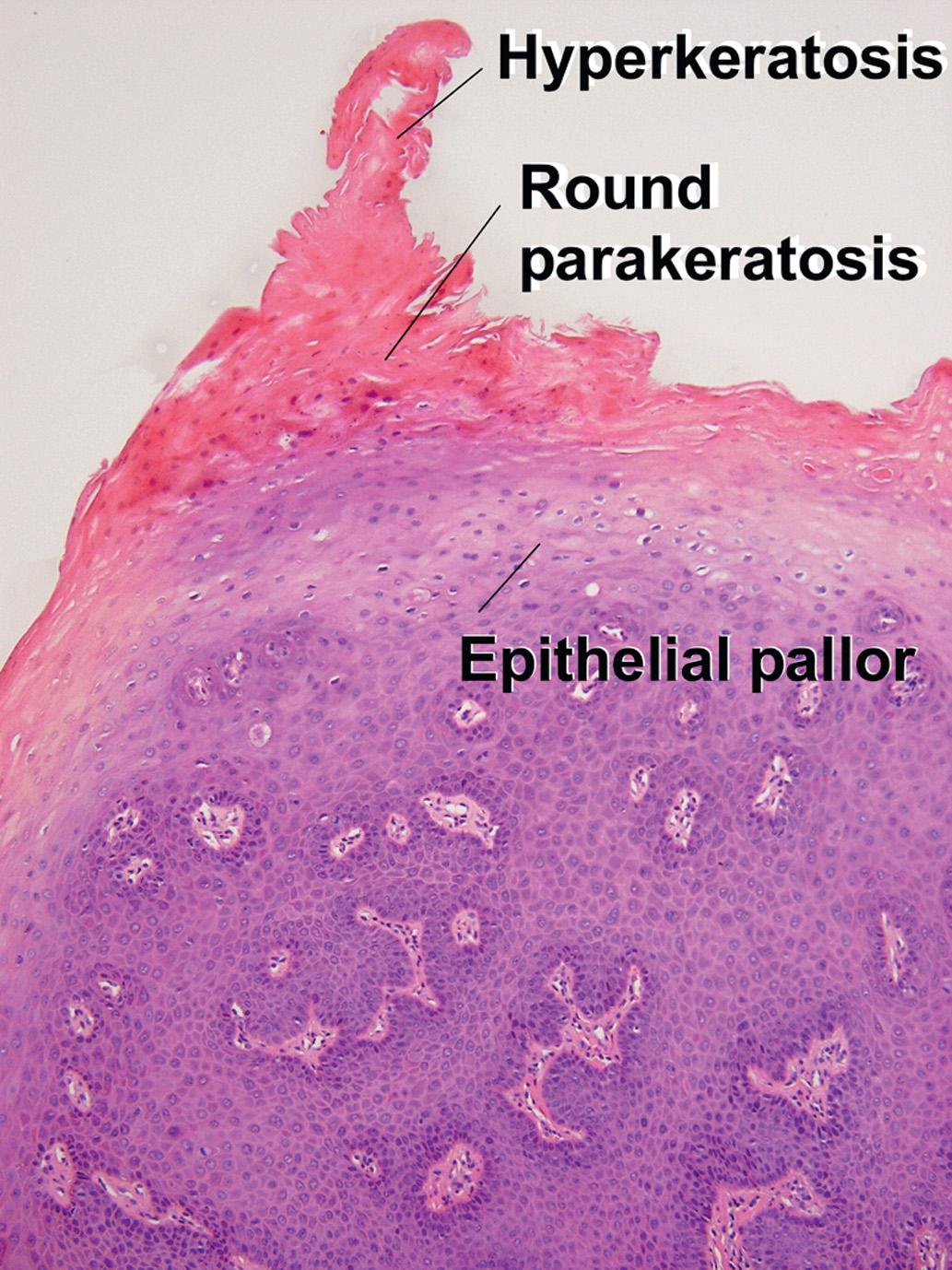
Cyst with wartlike lining
Verrucous cysts may arise as a result of papillomavirus infection of a hair follicle. On plantar surfaces, they may arise from eccrine ducts, and the lining is more likely to resemble myrmecia.
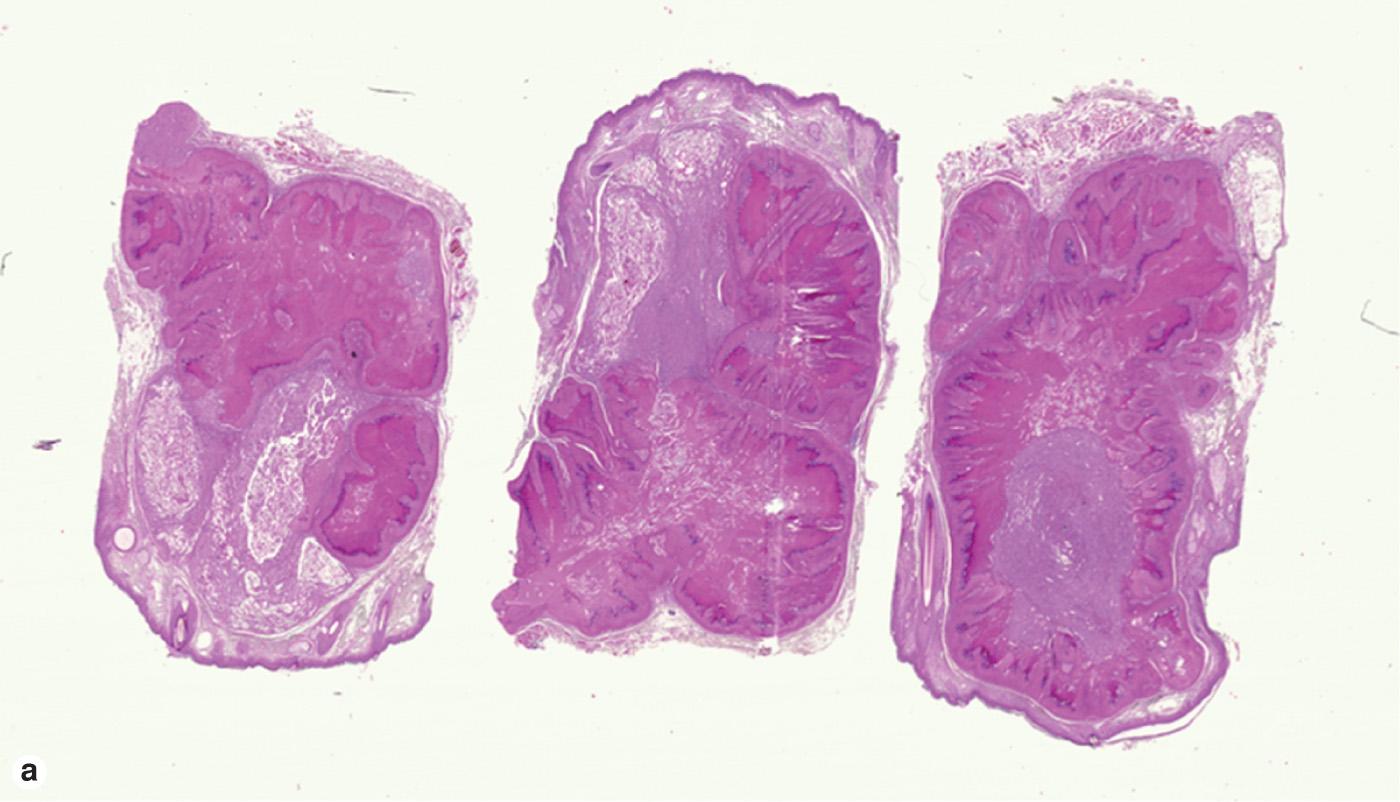
Ballooning degeneration of keratinocytes
Multinucleated keratinocytes with nuclear molding
Herpetic cytopathic effect (basophilic eggshell of chromatin at the periphery of the nucleus)
Mild features of leukocytoclastic vasculitis may be present
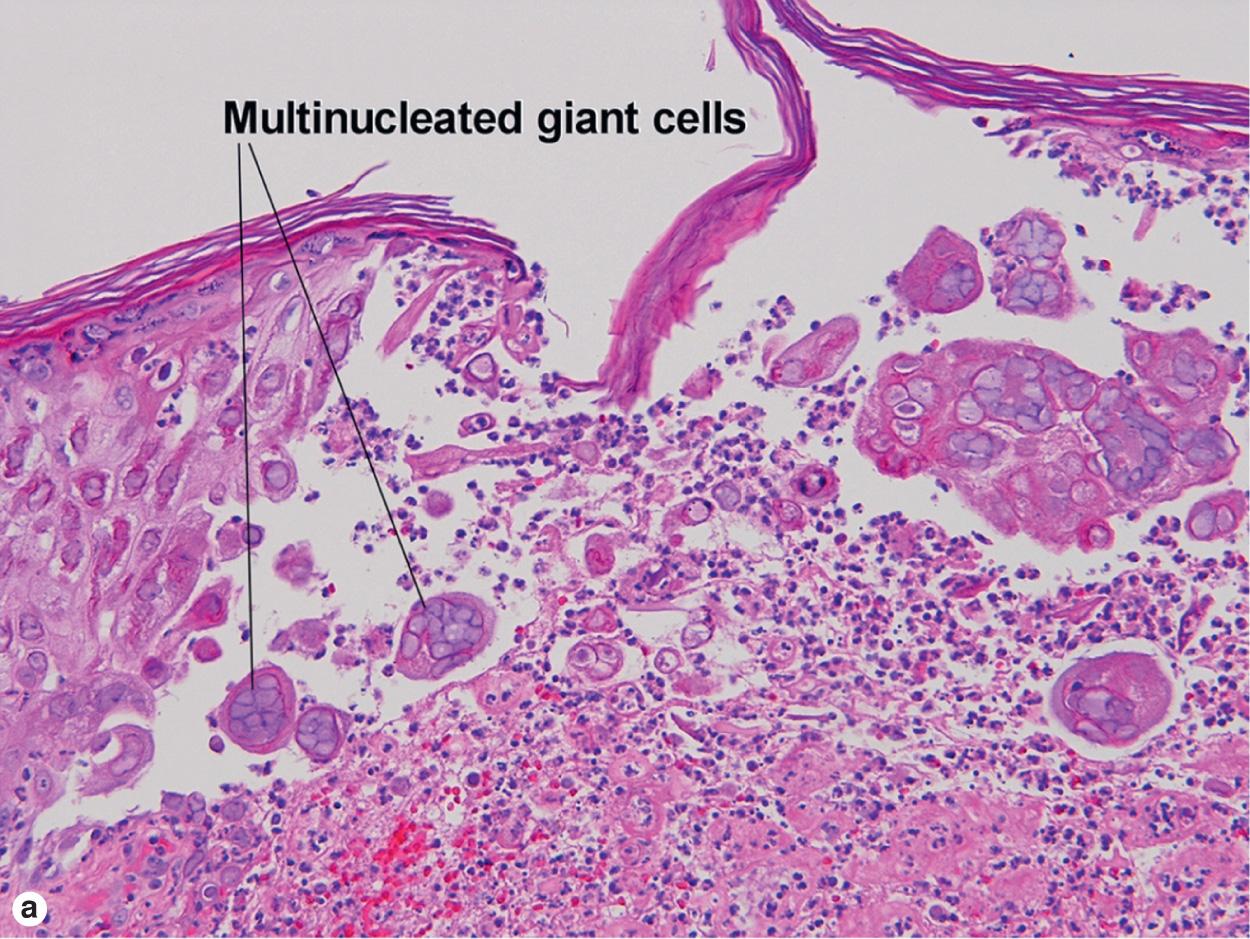
Ballooning degeneration of keratinocytes
Multinucleated keratinocytes with nuclear molding
Herpetic cytopathic effect (basophilic eggshell of chromatin at the periphery of the nucleus)
Dramatic leukocytoclastic vasculitis typical
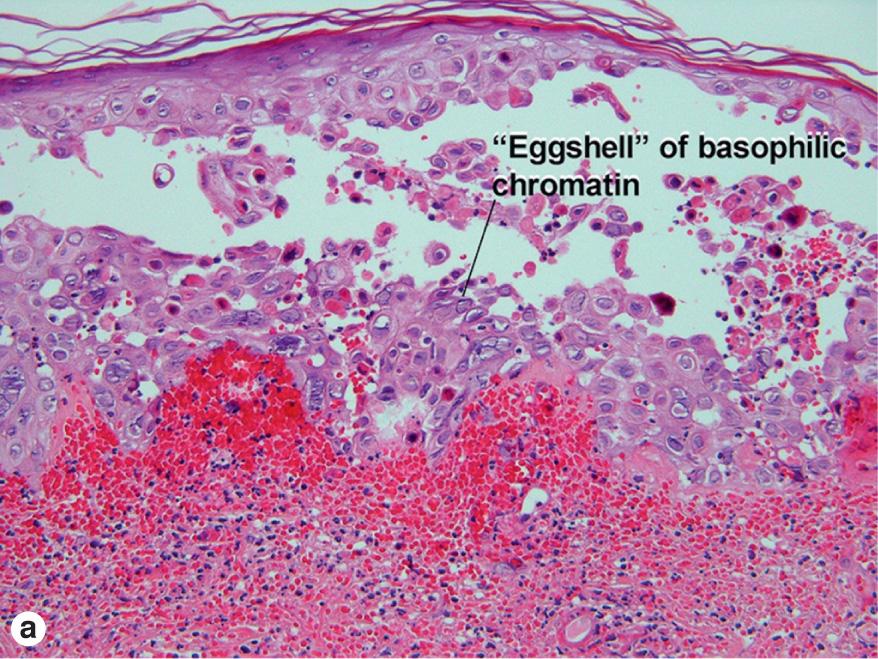
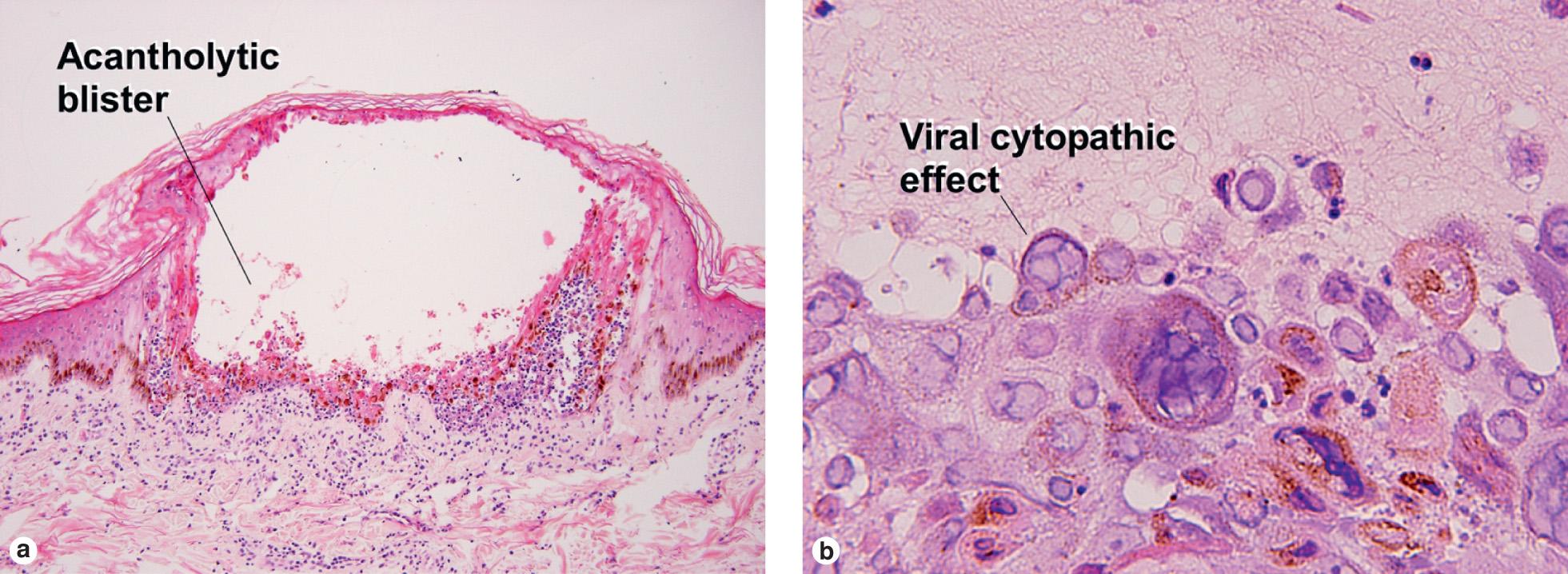
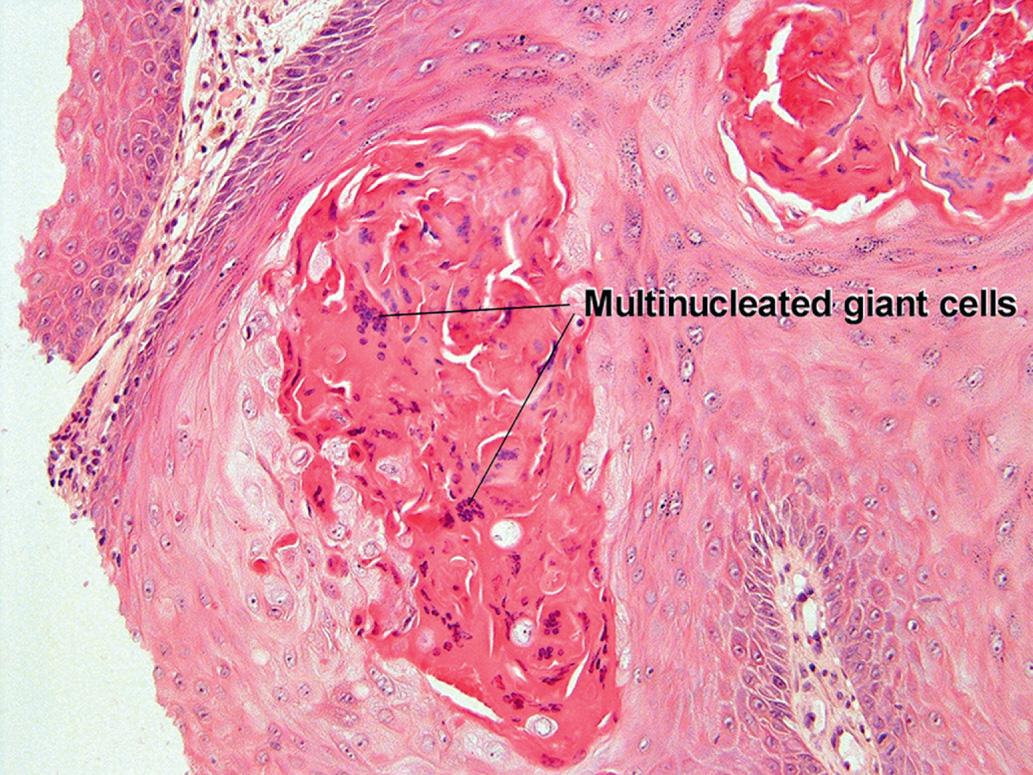
Ballooning degeneration of keratinocytes
Multinucleated keratinocytes with nuclear molding
Herpetic cytopathic effect (basophilic eggshell of chromatin at the periphery of the nucleus)
Mild features of leukocytoclastic vasculitis may be present
Compact hyperkeratosis
Variable papillomatosis
Follicular herpetic cytopathic effect
Multinucleated giant cells with basophilic nuclear rims and nuclear molding are noted within follicular epithelium. This pattern is typically seen in immunosuppressed patients, especially in the setting of human immunodeficiency virus (HIV) infection.
Large endothelial cells with owl's-eye nuclei
Cytoplasm may be ample or scant
In HIV patients, cytomegalovirus probably does not cause ulcers, but reactivates within ulcers. Viral cytopathic changes may be found in ulcers of various causes. This alerts the clinician to look for evidence of cytomegalovirus retinal involvement.
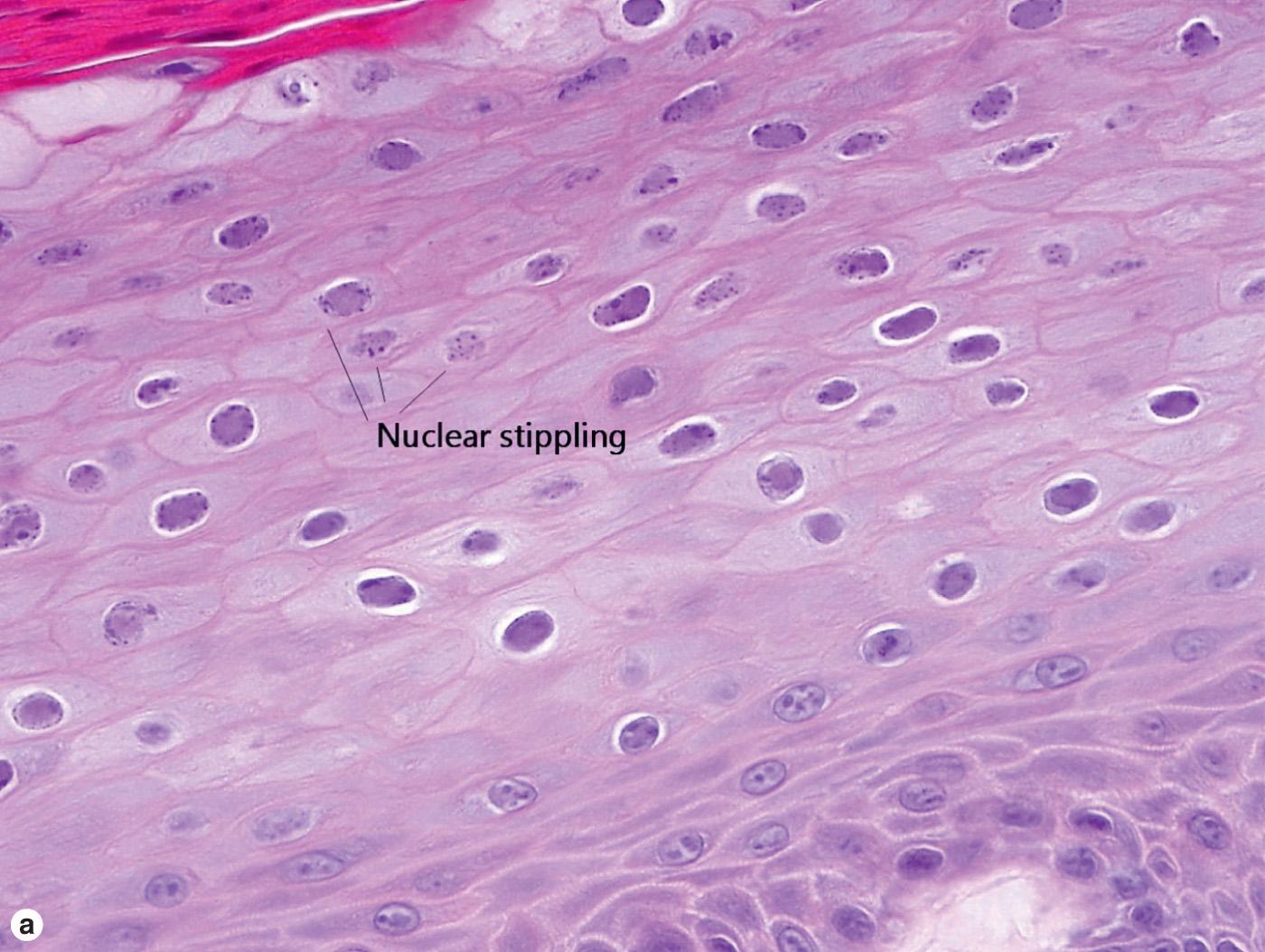
HIV-associated Epstein–Barr virus (EBV) infection
Nuclear stippling characteristic
In situ hybridization (Epstein–Barr encoding region [EBER]) is helpful for confirmation
Become a Clinical Tree membership for Full access and enjoy Unlimited articles
If you are a member. Log in here